

Robotics Science Projects. All Resources. What is PBL? Project Based Learning is a teaching method in which students gain knowledge and skills by working for an extended period of time to investigate and respond to an authentic, engaging and complex question, problem, or challenge. In Gold Standard PBL, projects are focused on student learning goals and include Essential Project Design Elements: Key Knowledge, Understanding, and Success Skills - The project is focused on student learning goals, including standards-based content and skills such as critical thinking/problem solving, communication, collaboration, and self-management. Challenging Problem or Question - The project is framed by a meaningful problem to solve or a question to answer, at the appropriate level of challenge. Hands-on science and art projects.
Coloring Puzzles. Math = Fun in these Cool Math Activities for Kids. This site uses cookies to provide basic functionality and improved security.
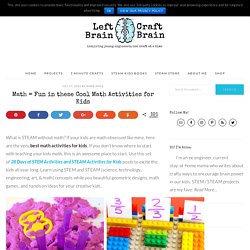
Caviale di Coca-Cola - Cucina Molecolare. 8 Contemporary Artists That Take String Art to the Next Level. Littlebits. STEM Challenge: Build a Cardboard Box Ball Track. Engineering Adventures Curriculum Units. Lesson Title: Spaghetti Anyone? Building With Pasta. It.pinterest. Testing Model Structures: Jell-O Earthquake in the Classroom - Activity - TeachEngineering. Spaghetti Bridges Challenge - James Dyson Foundation. STEM4YOUTH. British Science Week: Primary Activity Packs. Primary resources for cross curricular topics. STEM clubs robotics resources.
Giocando con il green screen e la stopmotion. Free Energy 100% , How make solar cell from CD flat. Build Fun Robots with Students. Encourage students to explore robotics with a guided, hands-on project or activity.

Science Buddies has projects, activities, Lesson Plans, and convenient kits that make it easy to do robotics with students. Student Robotics Projects and Activities Science Buddies has projects at all levels for student robotics. See our Bring Robotics to the Classroom for National Robotics Week post for more information about moving from introductory explorations to more advanced projects. The following Science Buddies projects and activities are highlighted in the robotics projects collection image above: Times Tables, Mandelbrot and the Heart of Mathematics. Resource Lessons. Bringing Inquiry-Based Learning Into Your Class. In the shallow end of the Types of Student Inquiry pool, Structured Inquiry gives the teacher control of the essential question, the starting point—for example, “What defines a culture?”

Or “What is the importance of the scientific method?” These questions are not answered in a single lesson and do not have a single answer, and, in fact, our understanding of an essential question may change over time as we research it. In Structured Inquiry, the teacher also controls specific learning activities, the resources students will use to create understanding, and the summative assessment learners will complete to demonstrate their understanding. In Controlled Inquiry, the teacher provides several essential questions. Learners unpack several resources predetermined by the teacher to provide valuable context and rich meaning relative to the essential questions. How Are the Types of Student Inquiry Helpful?
Inquiry is most successful when strongly scaffolded. Raspberry e Scratch: come lo usiamo alla Scuola primaria, una esperienza concreta (Lezione 20) – La Fucina delle Scienze. Mi piace fissare come Lezione 20, raccontando una serie di esperienze concrete sull’uso di Raspberry e Scratch alla Scuola primaria.

Mi piace farlo dando parola ad una maestra, Elena Moretti, che lo utilizza con i suoi studenti da diverso tempo. Physics - PhET Simulations. How to build another simple electric motor. Comment construire un moteur électrique simple. Youtube. How to Make a Spinning Homopolar Motor Sculpture. Il lancio del dado con Micro:bit – La Fucina delle Scienze. PROBABILITA’ CON MICRO:BIT – La Fucina delle Scienze.
Di Morena De Poli.
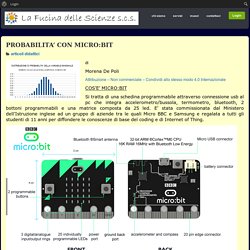
Conductive. 8 Electric Science Projects for Kids. It’s electric!
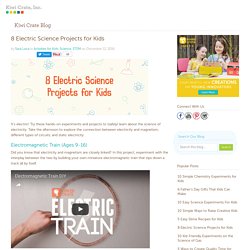
Try these hands-on experiments and projects to (safely) learn about the science of electricity. Take the afternoon to explore the connection between electricity and magnetism, different types of circuits, and static electricity. Did you know that electricity and magnetism are closely linked? In this project, experiment with the interplay between the two by building your own miniature electromagnetic train that zips down a track all by itself. SimQuest. STEAM Camp: How to Make a Magnetic Field Sensory Bottle. 100 Engineering Projects For Kids - The Homeschool Scientist. Robotics Activities. STEM Challenges on a Budget - Frugal Fun For Boys and Girls. Paper Circuit: Light-Up Origami Bat. Inchworm: a littleBits Project by superyummywonton. STEP 1 : Construct the body.

The inchworm blank should stand upright on its own when folded. Cut a rectangular strip of cardboard to about 3 x 11 inches. Fold the strip in half "hamburger" style. Then, fold both ends to create the inchworm's feet. They should be about 2 inches long. STEP 2 : Attach the skeleton. Taping bamboo skewers to the cardboard will make it more rigid.
Cut widthwise slits on the inchworm's body. Developed by the Museum of Science, Boston. Ruote e ingranaggi - Informazioni. Ruote e ingranaggi Autori Ferdinando Arzarello, Patrizia Casella, Franca Pretelli, Ketty Savioli.
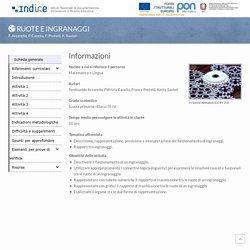
Tinkering and Technology – Sylvia Libow Martinez. Before this all slips my mind, I wanted to post some thoughts about the conversation I led at Educon 2.2 last weekend called Tinkering Towards Technology Fluency.
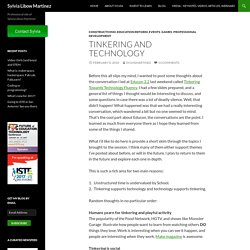
I had a few slides prepared, and a general list of things I thought would be interesting to discuss, and some questions in case there was a lot of deadly silence. Well, that didn’t happen! What happened was that we had a really interesting conversation, which wandered a bit but no one seemed to mind. That’s the cool part about Educon, the conversations are the point. I learned as much from everyone there as I hope they learned from some of the things I shared. 10 Essential STEM Teaching Practices. Many of my middle school students were natural scientists.
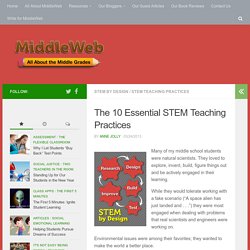
They loved to explore, invent, build, figure things out and be actively engaged in their learning. While they would tolerate working with a fake scenario (“A space alien has just landed and . . .”) they were most engaged when dealing with problems that real scientists and engineers were working on. Instructables - DIY How To Make Instructions. STEM. Next Generation Science Standards.